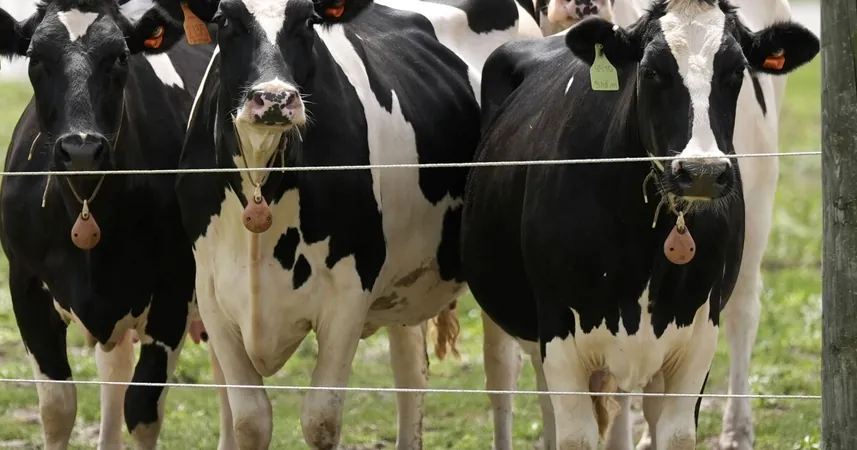
Bird Flu Outbreak: Are We on the Brink of Another Pandemic?
2024-11-27
Author: Michael
Bird Flu Outbreak: Are We on the Brink of Another Pandemic?
Fears surrounding the avian influenza (bird flu) outbreak have reached new heights as scientists warn that recent developments could set the stage for a potential pandemic. The crisis traces back to an unexpected host: dairy cattle in the Texas Panhandle. Approximately a year ago, a strain of the influenza virus began infecting these animals, culminating in today’s alarming situation.
The situation has worsened, with the virus rapidly spreading across more than 670 dairy herds in 15 states, and reports of human infections growing more frequent. Notably, a recent case involved a child in the San Francisco Bay Area and a hospitalized teenager in British Columbia, both of whom contracted the virus without a clear source of infection. In fact, genetic analysis from the Canadian case suggests a potential leap from wild birds, highlighting the virus's ability to adapt and infect humans more effectively.
Louise Moncla, a virologist at the University of Pennsylvania, expressed concern, stating, “The case in British Columbia shows that flu is always going to surprise us.” While Canadian health officials have determined that there is no evidence of human-to-human transmission, the isolated yet severe cases raise red flags.
The current outbreak is compounded by the virus's persistence in various reservoirs, including dairy cattle, poultry, and wild birds. This interplay raises alarming possibilities, particularly as flu season approaches, with fears of co-infections where the bird flu could mingle with seasonal influenza. Dr. Jürgen Richt, a veterinary microbiologist, warns that “we will have to live with it for some years to come,” as traditional control measures seem ineffective.
Recent investigations have revealed troubling mutations in the virus that could enhance its ability to infect human cells. In the British Columbia case, the virus exhibited several mutations that enabled it to bind more effectively to human receptors, posing significant health risks. This mutation landscape could represent a stepping stone toward the virus evolving into a strain capable of human-to-human spread, a scenario that authorities and scientists alike dread.
As the outbreak continues to spread, experts call for more aggressive surveillance and testing. Dr. Deborah Birx, former lead for the U.S. pandemic response, emphasizes the need for comprehensive tracking, particularly as past infections may often go unnoticed. In a study conducted by the CDC, approximately 7% of farm workers tested positive for past infections, with half unaware they had symptoms.
Looking ahead, experts highlight the potential dangers posed by reassortment—the genetic mixing of the bird flu virus with seasonal flu strains that could lead to a more virulent. Historically, pandemics have often emerged through such reassortment events, and the current flu season may provide the perfect breeding ground for this to occur.
The stakes are rising. Experts agree that without renewed strategies, more targeted vaccine campaigns, and rigorous monitoring, the bird flu could spiral out of control. The looming questions remain: Are we prepared to confront this escalating threat? The world watches with bated breath, hoping to avert another pandemic.









 Brasil (PT)
Brasil (PT)
 Canada (EN)
Canada (EN)
 Chile (ES)
Chile (ES)
 España (ES)
España (ES)
 France (FR)
France (FR)
 Hong Kong (EN)
Hong Kong (EN)
 Italia (IT)
Italia (IT)
 日本 (JA)
日本 (JA)
 Magyarország (HU)
Magyarország (HU)
 Norge (NO)
Norge (NO)
 Polska (PL)
Polska (PL)
 Schweiz (DE)
Schweiz (DE)
 Singapore (EN)
Singapore (EN)
 Sverige (SV)
Sverige (SV)
 Suomi (FI)
Suomi (FI)
 Türkiye (TR)
Türkiye (TR)